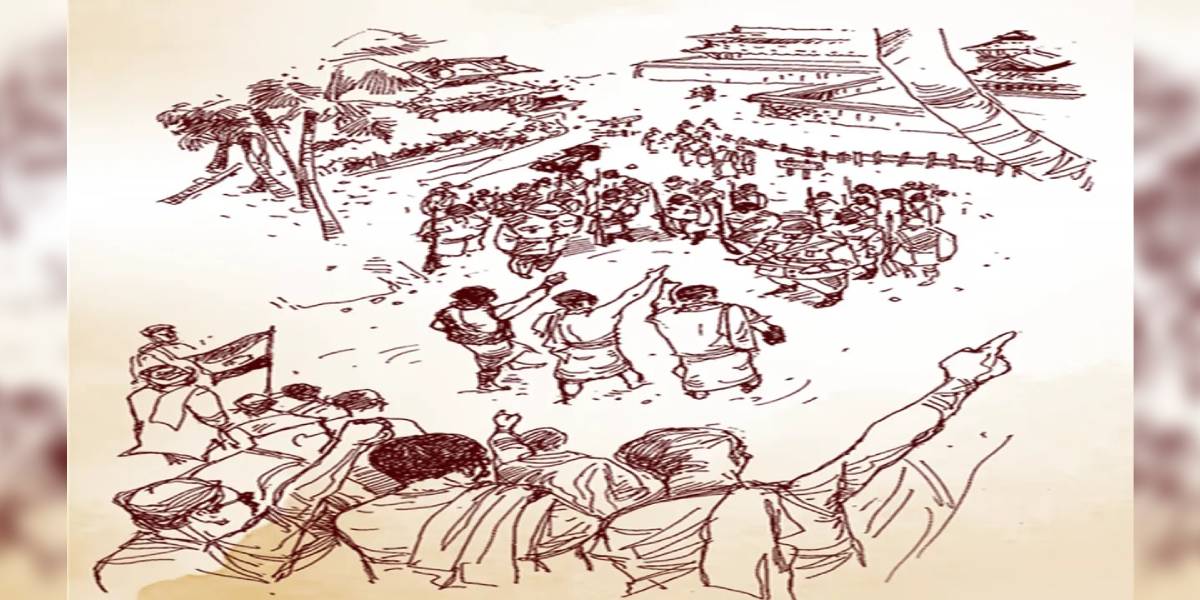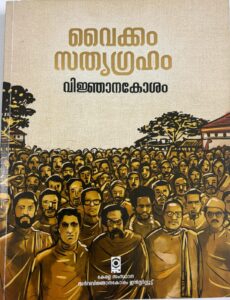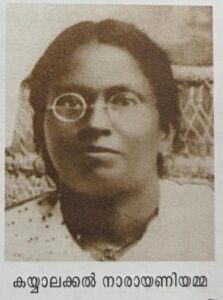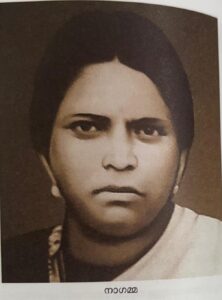The Vaikom Satyagraha was more than just a fight against discrimination—it was a defining moment shaped by the unwavering resolve of women who led from the front.
Published Mar 08, 2025 | 9:00 AM ⚊ Updated Mar 16, 2025 | 6:08 PM

An illustration of Vaikom Satyagraha movement courtesy: Information and Public Relations Department, Kerala
Synopsis: While the Vaikom Satyagraha — a movement that challenged Kerala’s rigid caste barriers — is often remembered through the leadership of prominent men, the crucial contributions of women have largely remained in the shadows.
“If men fail to make today’s Satyagraha a success, a battalion of women will rise and fight until victory is ours,” thundered Kayyalakkal Narayaniamma on 17 April 1924 at a charged public meeting in Vaikom.
Her words were not just rhetoric but a powerful declaration of women’s role in one of India’s most significant social reform movements—the Vaikom Satyagraha (30 March 1924 – 23 November 1925).
Spanning 603 days, the movement challenged Kerala’s rigid caste barriers, marking a turning point in South India’s history. However, while the satyagraha is often remembered through the leadership of prominent men, the crucial contributions of women have largely remained in the shadows.
Now, thanks to the State Institute of Encyclopedic Publications (SIEP), the ‘Vaikom Satyagraham Vijnanakosham’ (Vaikom Satyagraha Encyclopedia) is bringing these forgotten voices to light.
The encyclopedia uncovers the stories of the fearless women who stood shoulder to shoulder with their male counterparts, ensuring that the struggle for social justice was not a men’s battle alone—but a collective uprising for dignity and equality.
Dr Muse Mary George, Director of SIEP, emphasised the encyclopedia’s effort to highlight the contributions of women who actively participated in the struggle.

“Vaikom Satyagraham Vijnanakosham” of the State Institute of Encyclopedic Publications
“It’s a tribute to these fearless women who stood shoulder to shoulder with men, often stepping in to lead the movement when the men were imprisoned,” she told South First.
The encyclopedia documents the contributions of inspiring women like Eswari Ammal, SR Kannamma, Kayalakkal Narayaniamma, Nagamma, PK Kalyani, Susanna, and many others. It also includes a dedicated chapter on the role of women in the Vaikom Satyagraha, along with insights into the contributions of Tamil women to the movement.
“When we examine historical records, we often find these women mentioned only as wives, sisters, or volunteers,” Vaikom Satyagraham Vijnanakosham editor Pratyushachandran M told South First.
“But the truth is, when men were arrested, these women boldly took charge—delivering fiery speeches, mobilising support, and keeping the movement alive,” he added.
Dr Malavika Binni, in her chapter on Women’s Role in Vaikom Satyagraha, identifies three key aspects of their participation:
Women from marginalised communities—Ezhava (Thiyya), Pulaya, Paraya, Nadar, and Naikkar—played an instrumental role, actively defying caste oppression. Even elite women, though fewer in numbers, lent their support to the cause.
Unlike many movements of the time, the women of the Vaikom Satyagraha were not just fighting for their rights—they were fighting for equality for all.

Kayyalakkal Narayaniyamma
“They were not seeking gender equality alone; they were challenging the entire caste system,” noted Dr Malavika.
From leading Satyagraha protests to clashing with the police, fasting, organising public meetings, and forming women’s associations, their contributions were far-reaching.
The encyclopedia records the names of many such courageous women, including PM Parvathyamma, PK Kalyaniamma, Karuthu Kunjamma, Gomathi, Sreemati Karuppiamma, Marakkayamma, Nirmala Bai, Sreemati Varadarajulu Naidu, Mrs George Joseph, CN Meenakshiamma, Mrs Kesava Menon, Mrs Gandhidas Muthuswamy, and Mrs Mangalambal.
One remarkable strategy used by these women was stepping in when men were brutally assaulted and arrested by the police.
Since the Travancore police refrained from using physical force against women, they continued the protests, defying curfews and prohibitory orders—turning what could have been a setback into a strategic advantage.
While the movement is often associated with towering male figures, the contributions of courageous women leaders remain largely unrecognised.

Nagamma
One such leader was Susanna, wife of Barrister George Joseph, whom the British administration called the “Brain of the Vaikom movement.”
While men were arrested, Susanna ensured the struggle continued unabated.
She led protests, tended to injured volunteers, and presided over a crucial public meeting on the day Chittedath Shankupillai was arrested.
She fervently called upon people of all castes to unite for the right to movement.
Another key figure was PK Kalyani, who, along with Lakshmi and Karathkunju from Mavelikkara, participated in the satyagraha.
In her fiery speech, she reminded women that they, too, bore the responsibility of dismantling oppressive customs.
Women from Tamil Nadu were also at the forefront.
Nagamma, the first wife of Periyar, played a pivotal role in raising funds, mobilising support, and confronting the police.
Before getting arrested in May 1924, she spoke extensively across Travancore, ensuring the movement gained momentum.
SR Kannamma was among the first women to defy the police ban and lead protests when authorities tried to suppress their voices.
Women also contributed through the Handful of Rice Movement (Pidiyari Samaharanam) initiated by Ezhava women in Travancore.
This act of solidarity ensured financial and moral support for the satyagraha.
While history often reduces them to mere “Mrs,” these women were warriors of social justice.
Their unwavering spirit deserves recognition, ensuring their legacy inspires future generations in the fight for equality.
The Vaikom Satyagraha was more than just a fight against discrimination—it was a defining moment shaped by the unwavering resolve of women who stood at the forefront.
Their courage, strategic brilliance, and relentless spirit kept the movement alive, even in the face of brutal repression.
As Vaikom Satyagraham Vijnanakosham rightly reminds us, these women were not just witnesses to history—they were its architects, carving a path toward justice that continues to inspire generations.
The Vaikom Satyagraha, which marked its centenary in 2024, is now set to commemorate some of its most defining moments this month.
These include Mahatma Gandhi’s historic arrival at Vaikom on 9 March 1925, his crucial dialogue with high-caste Hindus at Indamthuruthimana on 10 March 1925, and his momentous meeting with Sree Narayana Guru at Varkala on 12 March 1925—all pivotal in shaping the course of this social reform movement.
(Edited by Majnu Babu).
